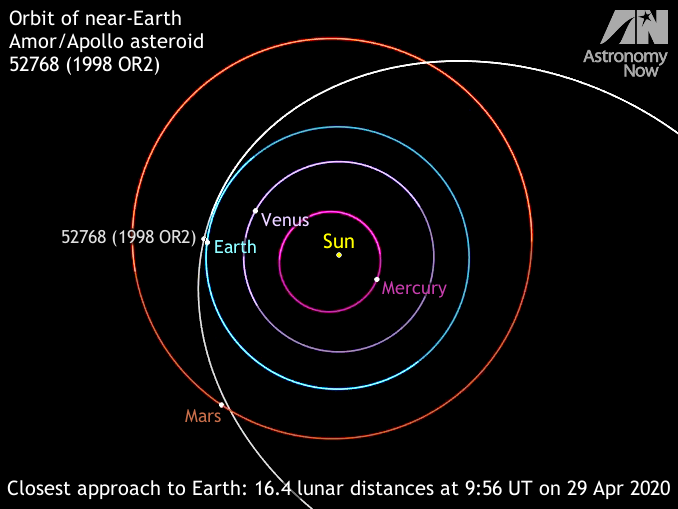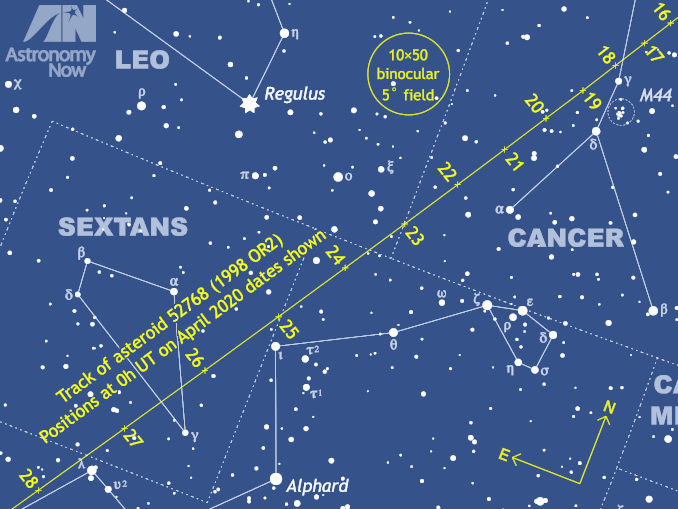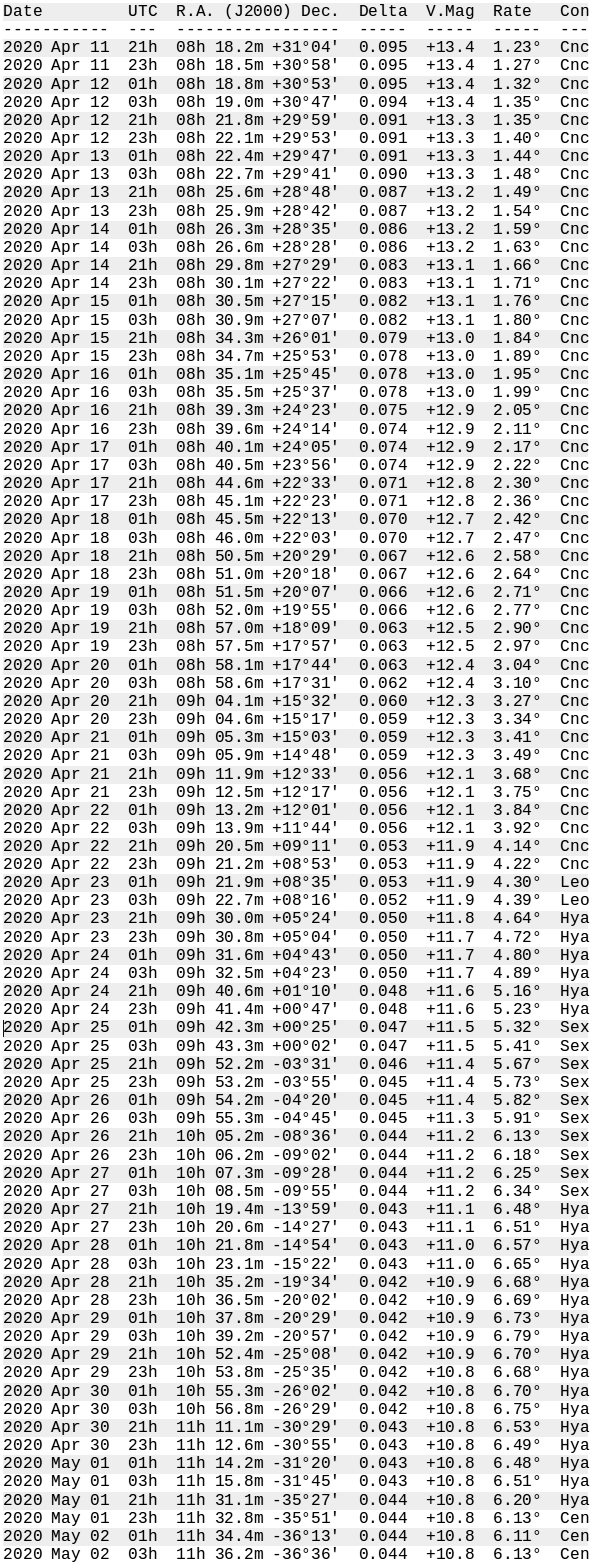Seek out 1998 OR2, the brightest predicted near-Earth asteroid encounter of 2020 – Astronomy Now Online

If you’re feeling a bit disappointed with the breakup of Comet ATLAS (C/2019 Y4), console yourself by searching for a large near-Earth asteroid with the catchy official name of 52768 (1998 OR2) that is already visible with instruments as small as 15-cm (6-inch) aperture and will brighten to eleventh-magnitude by the end of April.
The following extract of a detailed printable PDF finder chart for download shows the track of 1998 OR2 when moonlight will not be a problem for observers in the British Isles as darkness falls, which is about 10:40pm in mid-April, or 11pm a week later (all times BST, central UK).
By new Moon on 23 April, 1998 OR2 is predicted to be magnitude +12 or brighter and crossing the constellation border of Cancer into Leo at a rate of close to 4¼ degrees per day. By the time that the asteroid passes closest to Earth at a distance of just 16.4 lunar distances (6.3 million kilometres) at 09:56 UT (10:56am BST) on Wednesday, 29 April, it’s predicted to peak at magnitude +10.8, moving at a rate of 6.9 degrees/day against the stars of Hydra.

Discovered on 24 July 1998 by the Near-Earth Asteroid Tracking (NEAT) program at Haleakalā Observatory on the Hawaiian island of Maui, 1998 OR2 has a diameter of 2 to 4 kilometres and rotates once on its axis every 4.1 hours. The asteroid has a 1345-day (3⅔-year) orbit that brings it to within 1.0179 astronomical units (AU) of the Sun at perihelion, out to 3.7509 AU at aphelion.
Classified as a near-Earth object (NEO) and potentially hazardous asteroid (PHA), most of the time 1998 OR2 satisfies the criteria for an Amor-group body. However, gravitational perturbations can bring it closer to the Sun than Earth’s aphelion (1.017 AU), at which time the asteroid is reclassified into the Apollo group.
Finding 1998 OR2 the easy way
Observers with computerised GoTo mounts or digital setting circles may prefer to locate the asteroid from the two-hourly topocentric ephemeris computed for the heart of the UK below. Note that the coordinates are for the J2000.0 epoch and the tabulated times are in UTC, so you need to add one hour to obtain British Summer Time.

The next occasions that 1998 OR2 gets closer to Earth than on 29 April this year are 16 April 2079 and 16 April 2127, when the asteroid passes safely by our planet at 4.6 and 6.5 lunar distances, respectively.





